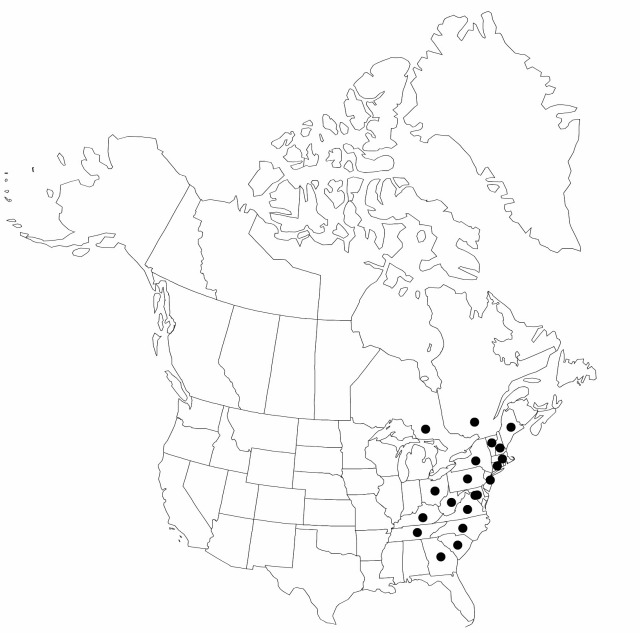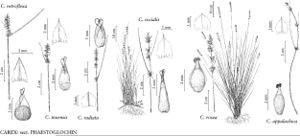Carex appalachica
Taxon 28: 614. 1979.
Plants without short-creeping rhizomes. Culms 20–60 cm, 0.7–1.3 mm wide basally, 0.2–0.5 mm wide distally. Leaves: sheaths tight, green, fronts hyaline; ligules less than 2 mm, wider than long; widest leaf blades 0.9–1.5 mm wide. Inflorescences with 3–6 spikes, 2–8 cm × 2.5–6.5 mm; proximal internodes more than 2 times as long as proximal spikes; proximal bracts 1–11 cm; spikes with 2–5(–7) ascending perigynia. Pistillate scales hyaline with green midvein, ovate to circular-ovate, 1.2–1.9 × 0.9–1.6 mm, body 1/2 length of perigynium, apex obtuse, acute, or short-awned. Anthers 0.8–1.3 mm. Perigynia green, faces not veined, 2–3.4 × 0.8–1.3 mm, base of perigynium spongy, thickened, longitudinally striate adaxially, spongy region 0.5–1.1 mm, margins serrulate distally; beak 0.3–1 mm, apical teeth 0.1–0.4 mm. Stigmas coiled or twisted, 0.05–0.08(–0.09) mm wide. Achenes ovate to obovate, 1.4–2 × 0.8–1.3 mm. 2n = 52.
Phenology: Fruiting late spring–early summer.
Habitat: Dry to mesic deciduous or mixed forests, usually on sandy or rocky soils
Elevation: 100–1000 m
Distribution

Ont., Que., Conn., D.C., Ga., Ky., Maine, Md., Mass., N.H., N.J., N.Y., N.C., Ohio, Pa., S.C., Tenn., Vt., Va., W.Va.
Discussion
The name Carex radiata has frequently been misapplied to C. appalachica.
Selected References
None.
